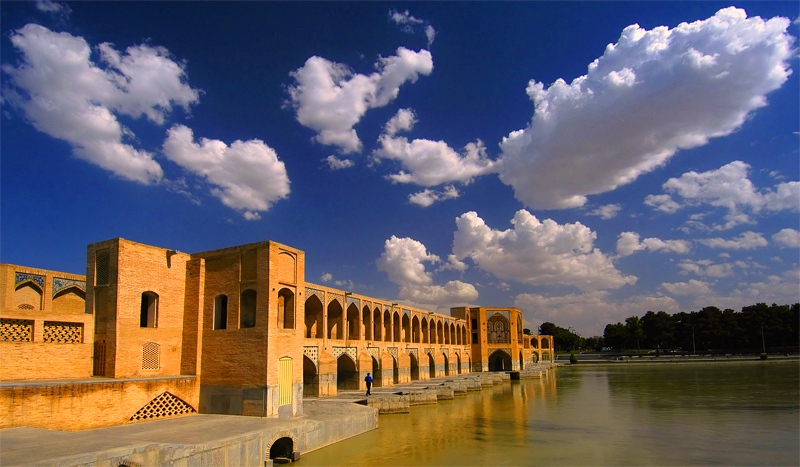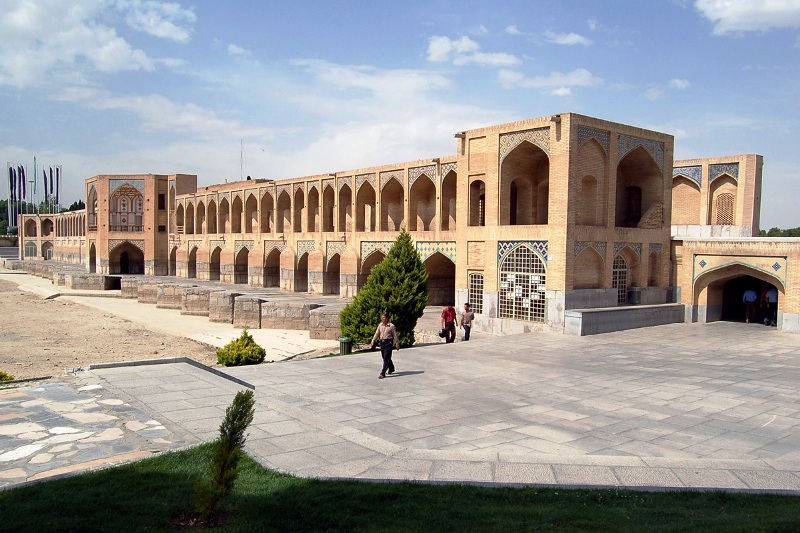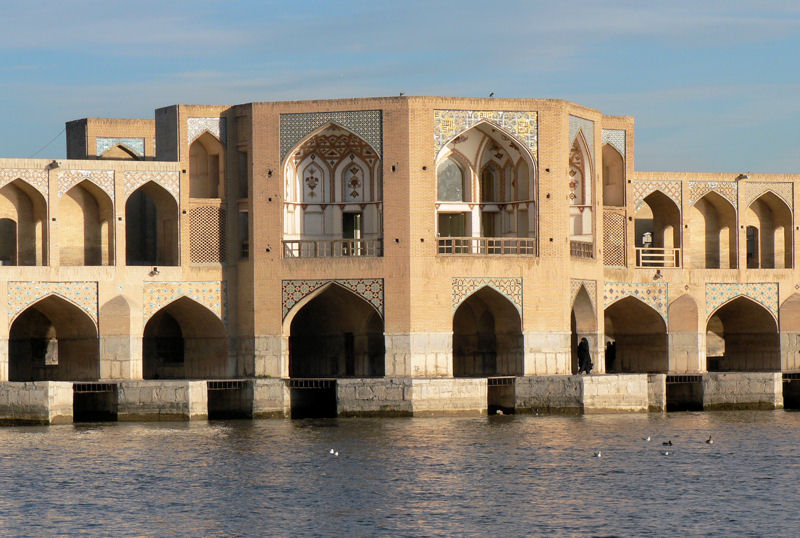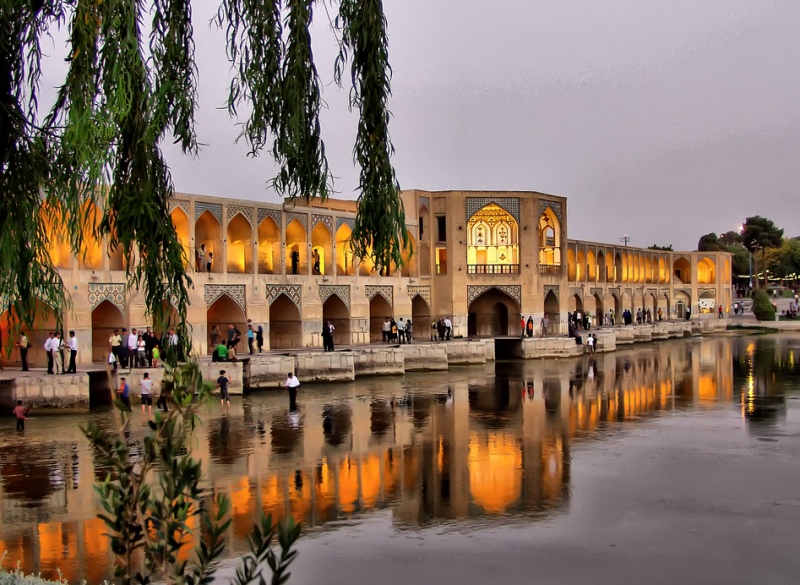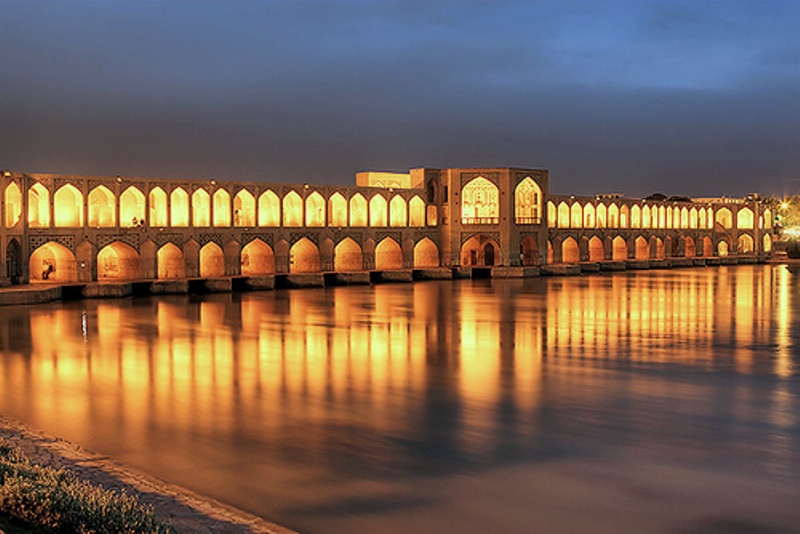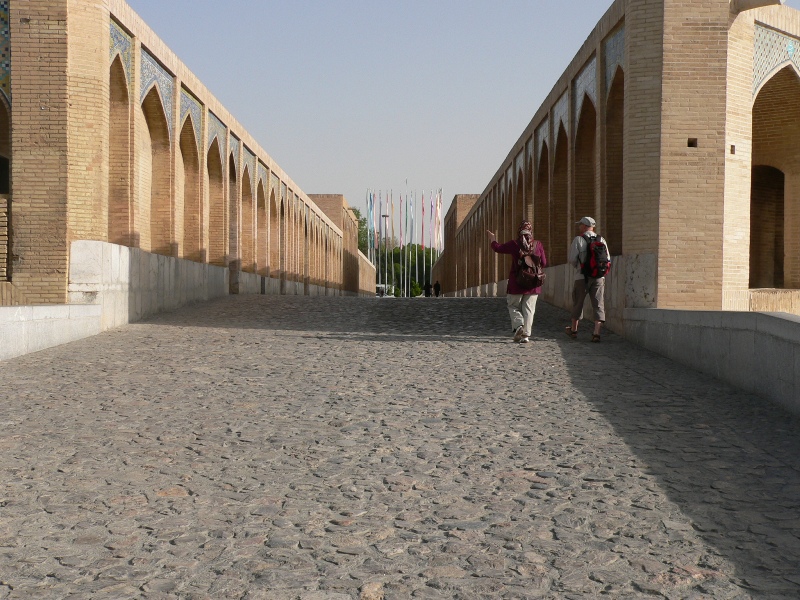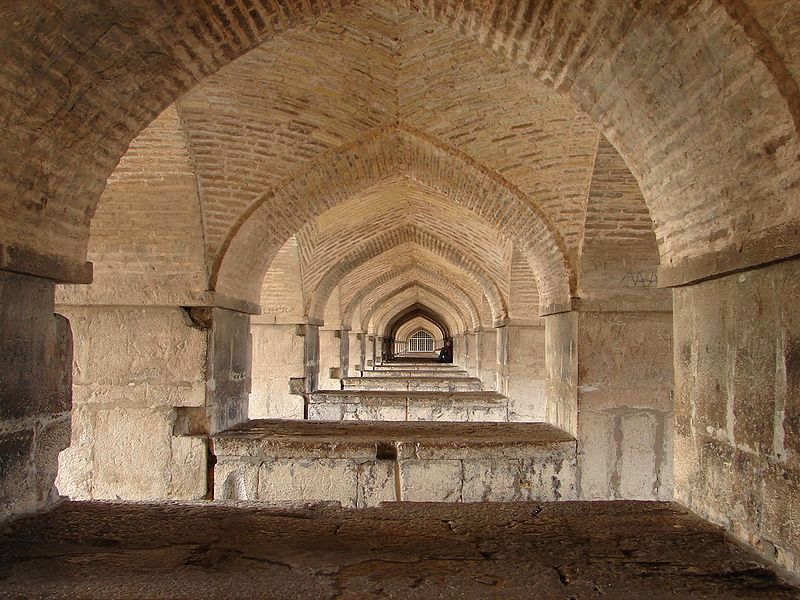| |||||||
Europe
North AmericaSouth AmericaAsiaAustralia and OceaniaAfrica |
Смотрите также: Khaju Bridge Khaju Bridge is one of the most famous bridges in Isfahan, Iran and has roused the admiration of travellers since the 17th century. Shah Abbas II built it on the foundations of an older bridge around 1650.
Khaju Bridge Crosses Zayandeh River Locale Isfahan, Iran Total length 105 metres Width 14 metres Design Arch bridge Material Stone Number of arches 23 Beginning date of built 1650
It links the Khaju quarter on the north bank with the Zoroastrian quarter across the Zayandeh River. It also functions as a weir; the downstream side is formed as a series of steps carrying the water to a much lower level. It has 23 arches and is 105 metres long and 14 metres wide.
The pass way of the bridge is 7.5 meters wide, made of bricks and stones with 21 larger and 26 smaller inlet and outlet channels. The pieces of stone used in this bridge are over 2 meters long and the distance between every channel and the ceiling base is 21 meters. The existing inscriptions suggest that the bridge was repaired in 1873.
Khaju is one of the bridges that regulate the water flow in the river because there are sluice gates under the archways over the river. When the sluice gates are closed, the water level behind the bridge is raised to facilitate the irrigation of the many gardens along the river upstream of this bridge.
On the upper level of the bridge, the main central aisle was utilized by horses and carts and the vaulted paths on either side by pedestrians. Octagonal pavilions in the center of the bridge on both the down and the upstream sides provide vantage points for the remarkable views. The lower level of the bridge may be accessed by pedestrians and remains a popular shady place for relaxing.
Comments: 0 |
|
|||||







































